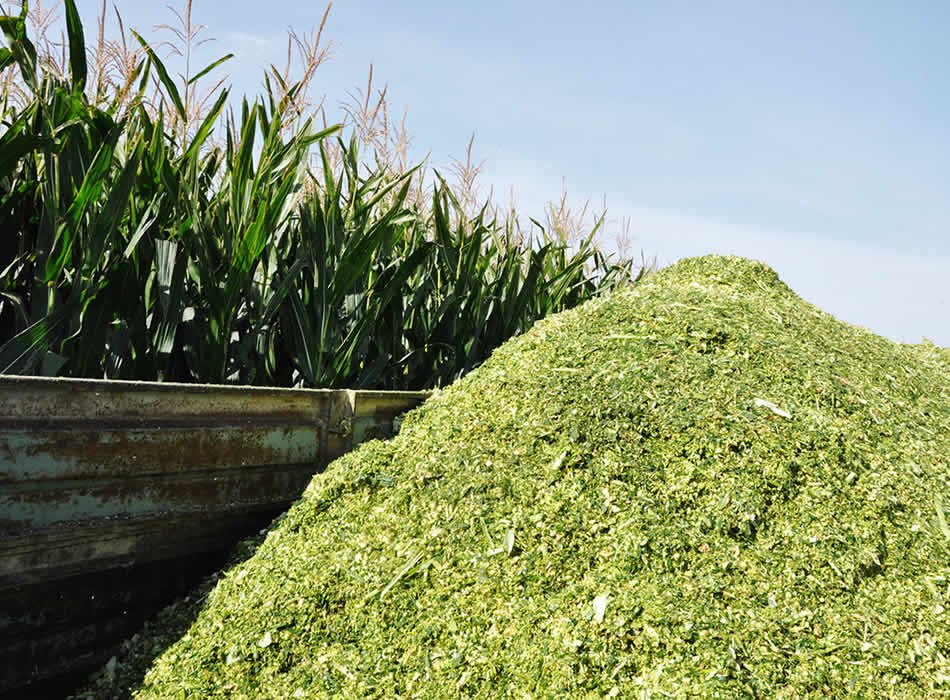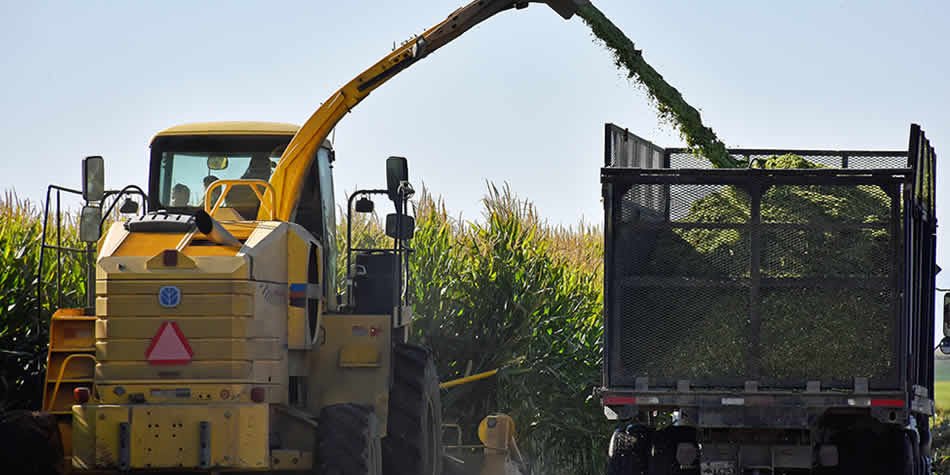Welcome to our 2023 guide, focused on Corn Silage FAQs that every livestock owner and farmer needs to know. Are you wondering about the costs of corn silage? Curious about the yields you can expect per acre? Or maybe you’re asking what the best practices are for feeding your livestock this type of feed. You’re in the right place! Our blog today answers these Corn Silage FAQs.
Table of Contents
Corn Silage Faqs #1: What is corn silage used for?
Today we are hearing more about the benefits of feeding our livestock such as cattle and pet animals with corn silage for their feeds. The good thing about this feed is that it is very affordable, which means that you can save money on your feed bills. You can also feed more animals if you have more feed stores. But how do you know when is a good time to start feeding these types of animals corn silage?
There are some animals that you can feed corn silage to such as cattle and pigs. When you have more feed sources for these animals then you will notice that they are happier and healthier. You will also notice that they gain weight more slowly as they get older and this means that they mature slower than animals who are fed on more traditional types of feed. In addition, during a bad economic climate when costs rise, feeding your livestock on corn silage is something that you can still do if you have enough stores.
Corn Silage Faqs #2: How many tons of corn silage per acre?
There are many factors that will determine the answer to this question. First, we must determine if our field is located on a large piece of property with plenty of room for a road or is it more of a grass field. What are the average rainfall and temperatures in the area of our farm? This will also affect how much corn silage is produced per crop season.
What type of soil does the field have? Cornfields can be very clay-rich or very acidic depending upon the limestone base of the land. The amount of sunlight received by the land will also play a major role in determining the corn production yield of the healthy and nutritious corn silage cattle feed.
How many acres of corn are planted in each field? This information is important for corn production yield because it will determine the number of trucks needed to harvest the corn. It will also determine how many acres are suitable for growing corn, trees for fruits and vegetables, cattle, and hogs. All of these decisions will need to be made prior to planting corn to maximize the yield for the entire year.

Corn Silage Faqs #3: When to chop corn silage?
The corn silage is normally chopped and considered to be ready for chopping between the 70th and 90th day of its plantation, the fiscal and clear sign of its readiness is when the corn milk line is in the center of the corn grains. At this time it’s considered to be the best time and most nutritious for animal and dairy cattle.
If you are still trying to figure out what you can feed your livestock such as cattle and pigs, then make sure that you look into corn silage as an option. It is a good way to keep up with your animal feed costs without spending more money than you need to. In addition, corn silage is made with the entire digestive tract in animals so this makes it less expensive than some other types of feed.
Remember that if you have any questions then you can call any of the many companies that sell this type of product. No matter if you need to feed your animals corn silage animal feed or not, you are sure to find it in the stores that sell these types of products.
Corn Silage Faqs #4: How many bushels of corn are in a ton of silage?
When we talk about “tons of corn silage,” we are referencing the number of unrefined carbohydrates that you can get from using a bushel of corn. You see, during the spring when your soil is ready to produce the best corn silage in Pakistan, there is a large number of carbohydrates in the ground for animal feed.
If you grow your corn during this time frame, you can have a ton of “free” or “refreshing” carbohydrates on hand. This is something that you can use in a lot of different recipes. For example, if you are making the best animal fodder throughout the year for your cattle, you can take any leftover corn silage that you may have and turn it into regular cattle feed, which is a delicious dessert.
However, if you don’t have any unrefined carbs in your soil, you need to make sure that you have an ample amount of fiber, too. This is because fiber helps with removing “starchy” or “dry” carbohydrates from your diet. If you have a large number of unrefined carbohydrates in your diet, this is even more important. Just be sure that you get enough fiber to balance it out.
Corn Silage Faqs #5: What is the corn silage price per ton in Pakistan?
Corn silage for animal fodder is consumed as a primary source of nourishment throughout the cattle farms of Pakistan. As a staple crop, corn silage is grown throughout Pakistan; however, the main production centers are located in Pakistan’s rural areas. The main corn silage price per ton in Pakistan is between ten to thirteen thousand rupees. However, this price can be considerably higher or lower, depending on the quality of the harvest. Those who need the corn silage daily in order to feed their families often pay much more than the occasional buyer.
Although it may be hard to believe, there are some online websites that will list the corn silage’s price in Pakistan. Some farmers even have websites that will sell their products directly to consumers, rather than through middlemen. These companies are willing to negotiate the prices because they know that the traditional markets will not provide these farmers with sufficient volumes to satisfy the demand. Therefore, by establishing direct relations with consumers, these companies will provide the best prices possible for corn silage bale. General the trend of the market is bigger the bale size the lower per ton price.
Looking for expert advice on corn silage? Agricomplex Pakistan offers a free consultation to answer all your questions. Contact us today at 0309-111 06 06.
Corn Silage Faqs #6: What is the average corn silage yield per acre?
One of the first questions many new animal feeders have is what about cattle feed corn silage yield per acre? This is an important question and one that should be considered carefully before investing in any type of livestock feeding. There are a few things to consider before you jump right into buying feed intended for cattle. First of all, you need to know that corn itself is not a good source of protein. Even if it was, most cattle would not be able to eat it due to the large amount of indigestible material that corn consists of. For this reason, most companies that sell animal feed for livestock feed use either soy or corn as their primary ingredient for making their products.
Soy feed has been shown to greatly improve the digestion rate of animals, particularly cattle, so this is usually the feed that you will find on the shelves of your local feed stores. The major benefit to corn silage yield per acre is its relatively high biological value. Compared to many other types of feeds, the amount of energy corn provides per unit of feed is quite remarkable.
One pound of corn will provide more energy than an ounce of meat, which is just about the most commonly fed animal product in the world. Furthermore, corn is one of the most easily digestible forms of feed, so it makes sense that it provides a good nutritional solution to livestock owners looking to enhance their livestock’s feeding efficiency.
In addition to corn silage yield per acre, you also need to be concerned with the quality of the corn. A good corn silage bale is consistently harvested from highly productive fields in favorable locations with good elevations. Corn is also planted in deep soils with good drainage, which allows nutrients to percolate to the root level, which in turn improves soil fertility and enhances plant growth.
Finally, corn grown for animal feed is often harvested during the spring or summer, which assures a high return on investment despite the elevated temperatures of those seasons. As you can see, the benefits of feeding cattle feed corn greatly outweigh any of the possible drawbacks.

Looking for expert advice on corn silage? Agricomplex Pakistan offers a free consultation to answer all your questions. Contact us today at 0309-111 06 06.







